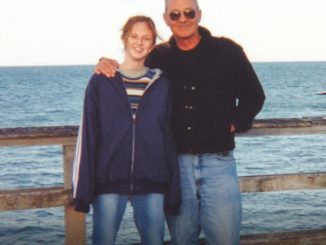
An orphan colt whose mother died shortly after giving birth has a new mom – a mare that had tragically lost her foal – thanks to the generosity of strangers and Washington State University veterinarians playing matchmaker.
Pairing an orphan foal and a nursing mare is a challenging task and one that commonly ends with failure. In this case, the connection was instantaneous.
“The mare had only been without a foal for about 24 hours,” Dr. Lisbeth Matthews, an equine medicine and surgery intern, said. “We walked her into the Veterinary Teaching Hospital and past him. He made a noise, and she went, ‘oh, there’s my foal,’ and started making noises back at him.”
It was a surprise to everyone how quickly the mare, named Shelly but affectionally called Mama by her owners, Roy and Faye Lions, accepted the colt. Equine veterinarian Jenifer Gold, who was helping to care for the foal and to supervise its introduction to the mare, said nursing mares frequently reject orphan foals, and when they don’t, the pairing process often takes days.
“She walked in and started nickering at him like it was her own baby – it was unbelievable,” Gold said. “I’ve been doing this for 20 years, and I have never seen it happen that way.”
The foal, which has been named Laredo, was admitted to the teaching hospital by his owner, Spokane resident Rachel Williams, just days after he was born when he started showing troubling digestive issues. Shortly after the colt arrived in Pullman, Faye Lions placed a call to WSU to see if the equine team was aware of any orphan colts needing a nursing mare.
“Our foal was dead, and nothing was going to bring it back, so we were hoping we could help someone else,” Faye Lions said. “It just so happened there was a foal there.”
A day later, the colt and Shelly were introduced.
“For them to be so willing to basically hand over their animal to a complete stranger after experiencing their own tragedy was pretty phenomenal,” Williams said. “I feel like in this scenario it was the worst of the worst for everybody, but there was a little bit of silver lining to the story.”
Williams is also grateful for the care and treatment she and her foal received at WSU.
“I just can’t even find words to say how great the veterinarians at WSU were,” she said. “They went above and beyond. I am just happy I ended up at WSU. I am so glad we were able to match those two up – it is kind of a miracle.”
Shelly will live with Williams until the colt is ready to be weaned, likely in six months, before she will return to her home in Kamiah, Idaho.
“It will be tough to say goodbye because you just naturally start to bond with animals, and she has kind of been my lifesaver,” Williams said. “It will be bittersweet for sure, but I am sure her owners will be happy to have her back.”
During the spring, the equine team at WSU typically sees at least a handful of orphan foals. Equine medicine specialist Dr. Macarena Sanz said orphan foals can be fed a powdered milk formula designed for horses, but those raised by humans typically develop behavioral issues that can become problematic as the animal matures.
“They turn out to be socially weird, have no understanding of personal space, and they are more difficult to train,” WSU equine veterinarian Macarena Sanz said. “The fact that this orphan foal has a mare is really going to make a difference.”
Sanz strongly encourages owners to immediately call their veterinarian if a foal is orphaned, as early care is critical to the animal’s survival.
The dark-skinned model and the blue-eyed blond had children. Their appearance shows all the best from their parents.

The blonde with blue eyes married the dark-skinned model. And now they have extraordinarily gorgeous kids that combine the greatest qualities of both parents. Now, observe their appearance.
Around the world, people have heard about this unique couple. People in their homeland in Australia are curious about the couple when they stroll through the streets.
The couple is the center of attention for everyone. Would still do! He is a blonde with blue eyes, and she is a breathtakingly beautiful dark-skinned girl. How two such disparate people met and fell in love is a mystery to all!
And this is how it was. The pair had their online meeting. On a dating site, the man came across the profile of his future wife. He was so enamored with her from the very first picture. But given that the stranger was a model, this is hardly shocking. Her looks and physique can make many people envious.

The girl accepted them when they first met. Their love story started then, and two years later he proposed to her. He proposed marriage to his sweetheart in the center of the town square. She concurred. There was video of this heartwarming occasion.
In any case, the video became incredibly popular! People started to follow the unique duo as word of it spread across the Internet. Everyone was pleased for the upcoming family, and there was no hostility.

The wedding quickly happened. All people wanted was for the newlyweds to start a family as soon as possible. It was hard to even picture their offspring looking as gorgeous as they would.
The girl the couple had was amazing. She genuinely absorbed her parents’ best qualities.

The girl had a sister two years later. Even though the baby is only a year old, everyone immediately knows that the sisters will develop into extraordinarily attractive young women.

The pair is in it for their own enjoyment. He is a photographer, and she blogs. They have an intense love for one another and their kids. They also serve as more evidence that love really does rule the world. Furthermore, she cannot be broken by barriers arising from differences in race, nationality, or appearance.



Leave a Reply